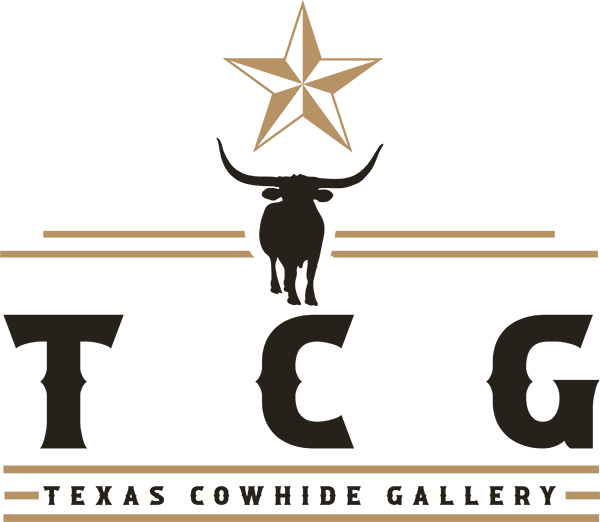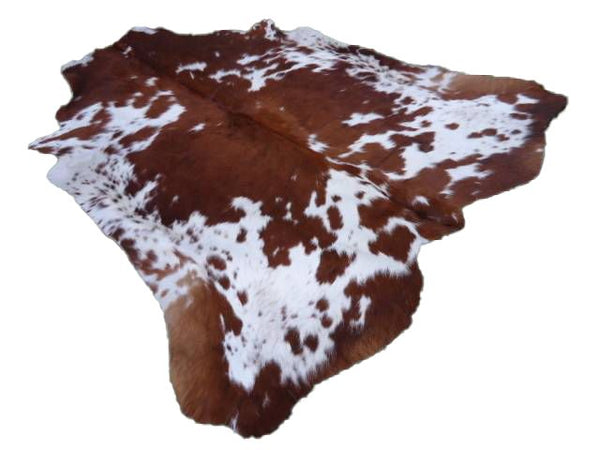Leather, a material admired for its durability and timeless charm, has been cherished by us humans for as long as we can remember. Among the various types of leather, cowhide stands as one of the most popular and widely used. While many people appreciate cowhide leather for its aesthetic appeal, there is much more to this material than meets the eye.
The science of cowhide leather quality goes beyond its surface beauty and includes the intricacies of its composition, production, and how it performs over time. Here, we will explore the fascinating world of cowhide leather quality, looking beyond its mere appearance and into the scientific factors that determine its excellence.
Understanding the Basics of Cowhide Leather
The origin of cowhide products can be connected to the meat industry. Cattle, which provide meat for human consumption, also yield cowhide as a byproduct of this process. This practice can be traced back to the early agricultural societies, where cattle served as essential livestock for both sustenance and work. The hides from these animals were not wasted; instead, they were tanned and transformed into a wide array of practical and durable items.
From clothing and footwear to tools, shelter, and even artistic creations, cowhide products became indispensable in human civilizations. Over time, the tanning processes improved, leading to the development of diverse cowhide products, showcasing the sustainable and resourceful nature humans possess as they learn to utilize every part of the animals they raise.
1. Leather Composition

The composition of leather consists of three main layers: the epidermis, dermis, and subcutaneous tissue. The outermost layer, the epidermis, is responsible for the surface texture and appearance of leather. It contains tiny hair follicles and pores and often retains the natural grain pattern, which contributes to the unique character of each piece of leather. Beneath the epidermis lies the dermis, the thickest and most crucial layer, consisting of densely packed collagen fibers. These fibers provide leather with strength, flexibility, and durability.
Finally, the subcutaneous tissue, the innermost layer, contributes to the thickness and suppleness of the leather but is relatively less significant in comparison to the epidermis and dermis. The composition of these layers is a result of a complex process of tanning, where raw animal hides are treated with various agents to stabilize the proteins and transform them into the resilient material we know as leather. The specific tanning process and agents used can vary, resulting in different types of leather, such as chrome-tanned, vegetable-tanned, or aldehyde-tanned leather, each with unique characteristics.
2. Tanning Processes
The tanning process is a crucial and intricate step in transforming raw cowhide into leather, adding to its durability, flexibility, and suitability for various applications. There are several tanning methods employed in the leather industry, with each method offering distinct properties and characteristics to the final product. The choice of tanning process significantly impacts the quality and performance of the leather.
One of the most common tanning methods is chrome tanning. Chrome tanning involves the use of chromium salts, such as chromium sulfate, to stabilize the proteins in the hide. This method is highly efficient and quick, resulting in soft and supple leather that is resistant to water and heat. Chrome-tanned leather is commonly used in products like shoes, bags, and upholstery due to its durability and ability to maintain its shape even in moist conditions.
Vegetable tanning, on the other hand, is an age-old, natural method that utilizes tannins extracted from plant sources, such as oak, chestnut, or hemlock. This process is known for producing more eco-friendly and biodegradable leather. It results in leather with a firm, stiff feel, which softens over time with use, acquiring a rich patina. Vegetable-tanned leather is often used in luxury leather goods, saddlery, and artisanal leather crafting due to its ability to age beautifully and develop a unique character.
Another tanning process is aldehyde tanning, which uses synthetic compounds like glutaraldehyde or oxazolidine to tan the hides. Aldehyde-tanned leather is lightweight, soft, and flexible, making it suitable for delicate applications like glove-making. This method is also known for its light-colored finish, making it ideal for achieving pale or pastel shades.
Additionally, there is also brain tanning, a traditional and labor-intensive method where animal brains or other emulsified fats are used to tan the hides. This process results in soft, pliable leather but is less commonly used in the modern leather industry.
The specific tanning process chosen depends on the desired characteristics of the leather and the intended use of the final product.
3. Grading and Selection

Not all cowhide leather is created equal, and grading plays a significant role in determining quality. Various factors are considered when evaluating and classifying leather, including imperfections, thickness, and overall appearance.
One of the primary criteria for grading leather is the presence of imperfections. These imperfections can include scars, insect bites, wrinkles, and scratches on the hide. The number, size, and visibility of these flaws play a crucial role in determining the grade of the leather. Top-grain leather, for instance, is derived from the top layer of the hide and is often nearly free from imperfections, resulting in a smoother surface and a more polished appearance. In contrast, full-grain leather retains the outermost layer of the hide, showcasing natural grain patterns and imperfections. Full-grain leather is considered the highest quality due to its authentic and rugged appearance, which only becomes more attractive with time as it develops a unique patina.
Leather is also graded based on its thickness, which can vary according to the part of the hide used. Generally, the outer sections are thicker and more robust, while the inner sections are thinner and more pliable. The thickness is critical as it influences the leather's durability and its suitability for specific applications. For instance, thicker leather is often preferred for items that need to withstand heavy use, like belts or saddles, while thinner leather may be suitable for fine leather goods such as wallets and gloves.
The overall appearance of leather, including its color and texture, is another aspect considered during grading. Some leathers are treated with dyes and finishes to achieve a consistent color and texture, while others are left more natural, showcasing the hide's unique characteristics. Different grades and selections cater to diverse aesthetic preferences, from the sleek and uniform look of corrected-grain leather to the rustic and authentic appeal of full-grain or distressed leather.
3. Durability and Longevity
Cowhide leather quality extends to its durability and longevity. The quality of cowhide leather is determined by its ability to resist wear, tear, and environmental factors. Thickness, as well as the tanning method used, plays a crucial role in enhancing the leather's durability. Full-grain leather, for example, is thicker and more robust than top-grain leather, making it ideal for products that need to withstand heavy use.
Additionally, how well leather ages and patinas over time is a significant quality indicator. High-quality cowhide leather will develop an attractive patina, a natural sheen, and a character that improves with age. The science behind the patina formation involves the oxidation of the leather's oils and the interaction with external factors like sunlight, moisture, and friction.
4. Maintenance and Care

One of the fundamental steps in leather care is regular cleaning. Dust, dirt, and grime can accumulate on the surface of leather, potentially causing damage over time. To clean leather, it's essential to use a soft, damp cloth or sponge to gently wipe away surface dirt. Leather-specific cleaning products, designed to preserve the natural oils in the leather, can also be used to deep clean and remove stains.
Conditioning leather is another critical part of its maintenance. Leather, like human skin, needs hydration to remain supple and prevent cracking. Leather conditioners, often made from natural oils like mink oil or lanolin, should be applied regularly to maintain the leather's flexibility and to prevent it from drying out. These conditioners not only keep the leather soft but also help to maintain its natural shine.
Protecting leather from environmental factors is also crucial. Exposure to sunlight, heat, and excessive moisture can cause the leather to fade, dry out, or develop mold. Storing leather items in a cool, dry place and keeping them away from direct sunlight can help prolong their lifespan. For items exposed to moisture, like shoes, waterproof sprays and products are available to shield them from the elements.
For leather products with specific finishes, such as aniline or semi-aniline leather, it's essential to be cautious with cleaning and maintenance. These leathers have delicate finishes that can be easily damaged by aggressive cleaning or conditioning products. It's advisable to consult the manufacturer's guidelines or seek professional advice when dealing with such leathers.
Furthermore, proper storage is essential for leather items that are not in use. Storing leather goods in breathable, dust-free bags or wrapping them in acid-free paper can prevent damage and maintain their pristine condition.
6. Ethical and Environmental Considerations
In the modern world, the science of cowhide leather quality also incorporates ethical and environmental considerations. Sustainable and ethical leather production involves responsible sourcing of hides, humane treatment of animals, and eco-friendly tanning processes. Many consumers are now seeking leather products that adhere to these principles, contributing to a more responsible leather industry.
Final Thoughts
Cowhide leather is more than just a beautiful material; it's a result of a fascinating scientific process. The science of cowhide leather quality encompasses its composition, tanning methods, grading, durability, and maintenance. If you, too, find yourself interested in purchasing quality genuine cowhide products, feel free to reach out to us at Cowhide Gallery. With a focus on sustainability, our team of specialists works to ensure that all our cowhides are ethicallysourced. Contact us today to begin browsing our massive collection of authentic cowhide products.


